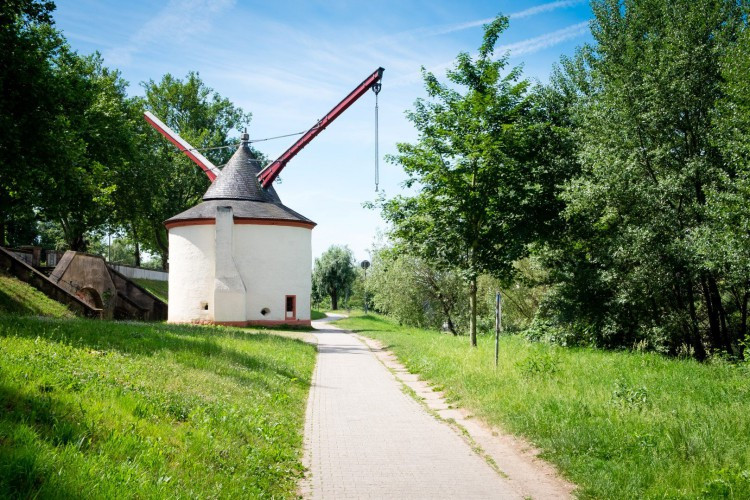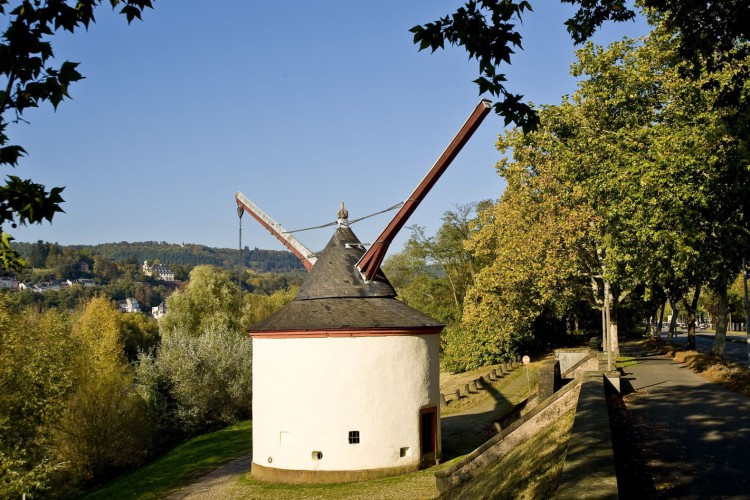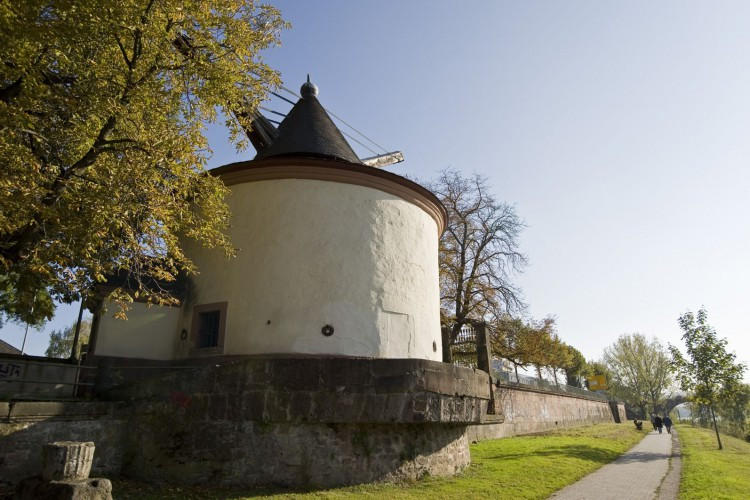Read more
In 1413, however, the first land-based crane was erected in the form of the stone ‘Old Crane’ (‘Alter Krahnen’), which, from then on, became the most robust, non-water-level-dependent alternative to the ship crane. And that’s not all: After operations commenced in the city in 1452 and spent several decades being rather unprofitable, the late 15th century brought with it a juicy fee increase. This not only allowed profits to finally be generated, but also quite incidentally enabled seamless monitoring of which taxable goods were being transported into the city, and which were being transported out.
Over 350 years later, the ‘Old Crane’ served as a model for the ‘Zollkrahnen’ (‘customs crane’), which stands some 250 metres up the Moselle, and whose two cantilevers were designed to take the strain off its predecessor. This newer harbour crane was in operation until 1910. But the ‘Old Crane’ was also renovated in the 18th century, when it was fitted with a second cantilever. It remains fully functional to this day, but, ever since the Moselle was banked up, has not been close enough to the water .
A must for: Moselle walkers. Engineering enthusiasts. Freighter fanatics and admirers of the brawny older generations.
Daytrip destination: 30%
Moselle walk: 70%
Nostalgia: 50%
PSSSST! THE INSIDER TIP:
It is unfortunately not possible to go inside the two cranes on the shores of the Moselle. But they’re still worth a daytrip, which can be perfectly combined with a walk or bike ride along the Moselle.
Header and Preview Picture: Herbert Schroyen
Over 350 years later, the ‘Old Crane’ served as a model for the ‘Zollkrahnen’ (‘customs crane’), which stands some 250 metres up the Moselle, and whose two cantilevers were designed to take the strain off its predecessor. This newer harbour crane was in operation until 1910. But the ‘Old Crane’ was also renovated in the 18th century, when it was fitted with a second cantilever. It remains fully functional to this day, but, ever since the Moselle was banked up, has not been close enough to the water .
A must for: Moselle walkers. Engineering enthusiasts. Freighter fanatics and admirers of the brawny older generations.
Daytrip destination: 30%
Moselle walk: 70%
Nostalgia: 50%
PSSSST! THE INSIDER TIP:
It is unfortunately not possible to go inside the two cranes on the shores of the Moselle. But they’re still worth a daytrip, which can be perfectly combined with a walk or bike ride along the Moselle.
Header and Preview Picture: Herbert Schroyen





